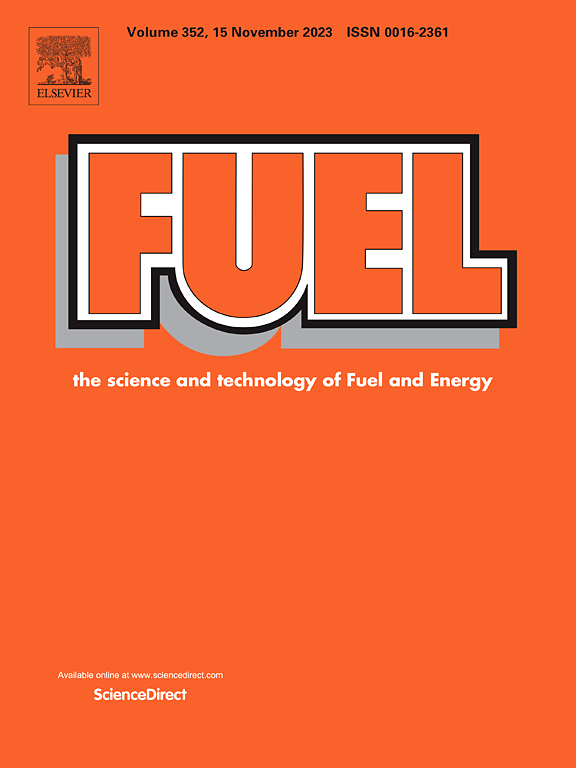具有碳捕获自动突破控制的VPSA循环的参数筛选
IF 6.7
1区 工程技术
Q2 ENERGY & FUELS
引用次数: 2
摘要
真空变压吸附(VPSA)是一种高效的技术,可用于从燃烧固定源捕获碳。然而,VPSA是一个循环和复杂的过程,涉及几个可能影响关键性能指标的操作变量:纯度、回收率、生产率和能耗。通常,二氧化碳(CO2)的浓度、流量和气体温度可能会根据燃烧过程中过量的空气、燃料类型、燃料纯度、燃烧设备的效率、能量需求等因素而变化。工业二氧化碳捕获技术必须能够适应这些可能的工艺变化。在这项工作中,采用一种新的自动化控制策略,而不是使用传统的时间调度,在七步VPSA过程中进行二氧化碳捕获。塔的突破点用于控制进料、漂洗和吹扫步骤(停止点),以及这些步骤中使用的三种流量和再生步骤中使用的真空压力。采用两水平分数因子设计27−3,应用方差分析(ANOVA)研究这些控制变量对关键绩效指标的影响。结果表明,该控制策略的关键参数是真空压力和进料和冲洗停止点。通过自动突破控制,可以从模拟干燥烟气中捕获81%的二氧化碳,获得98%的二氧化碳纯度,0.26 kgCO2/(kgadabsorbent·h)的生产率和0.18 kWh/kgCO2的能耗。本文章由计算机程序翻译,如有差异,请以英文原文为准。
Parameter screening of a VPSA cycle with automated breakthrough control for carbon capture
Vacuum pressure swing adsorption (VPSA) is an efficient technology that can be used for carbon capture from combustion stationary sources. However, VPSA is a cyclic and complex process that involves several operational variables that can have an influence on the key performance indicators: purity, recovery, productivity, and energy consumption. Typically, the concentration of carbon dioxide (CO2), flowrate and gas temperature may vary depending on the excess of air on the combustion process, type of fuel, purity of the fuel, the efficiency of the combustion equipment, the energetic demand, among many other. An industrial CO2 capture technology must be able to adapt to these possible process changes. In this work, a new automated control strategy was applied, instead of using the conventional time scheduling, in a seven-step VPSA process for CO2 capture. The column breakthrough points were used to control the feeding, rinse and purge steps (stop points) together with three flowrates used in these steps and the vacuum pressure used in the regeneration step. A two-level fractional factorial design 27−3, was used to study the influence of these control variables on the key performance indicators, applying the analysis of variance (ANOVA). The results show that the critical parameters of this new control strategy were the vacuum pressure and the feed and rinse stop points. With the automated breakthrough control, it was possible to capture 81 % of the CO2 from a simulated dry flue gas obtaining a CO2 purity of 98 %, a productivity of 0.26 kgCO2/(kgadsorbent·h) and an energy consumption of 0.18 kWh/kgCO2.
求助全文
通过发布文献求助,成功后即可免费获取论文全文。
去求助
来源期刊

Fuel
工程技术-工程:化工
CiteScore
12.80
自引率
20.30%
发文量
3506
审稿时长
64 days
期刊介绍:
The exploration of energy sources remains a critical matter of study. For the past nine decades, fuel has consistently held the forefront in primary research efforts within the field of energy science. This area of investigation encompasses a wide range of subjects, with a particular emphasis on emerging concerns like environmental factors and pollution.
 求助内容:
求助内容: 应助结果提醒方式:
应助结果提醒方式:


